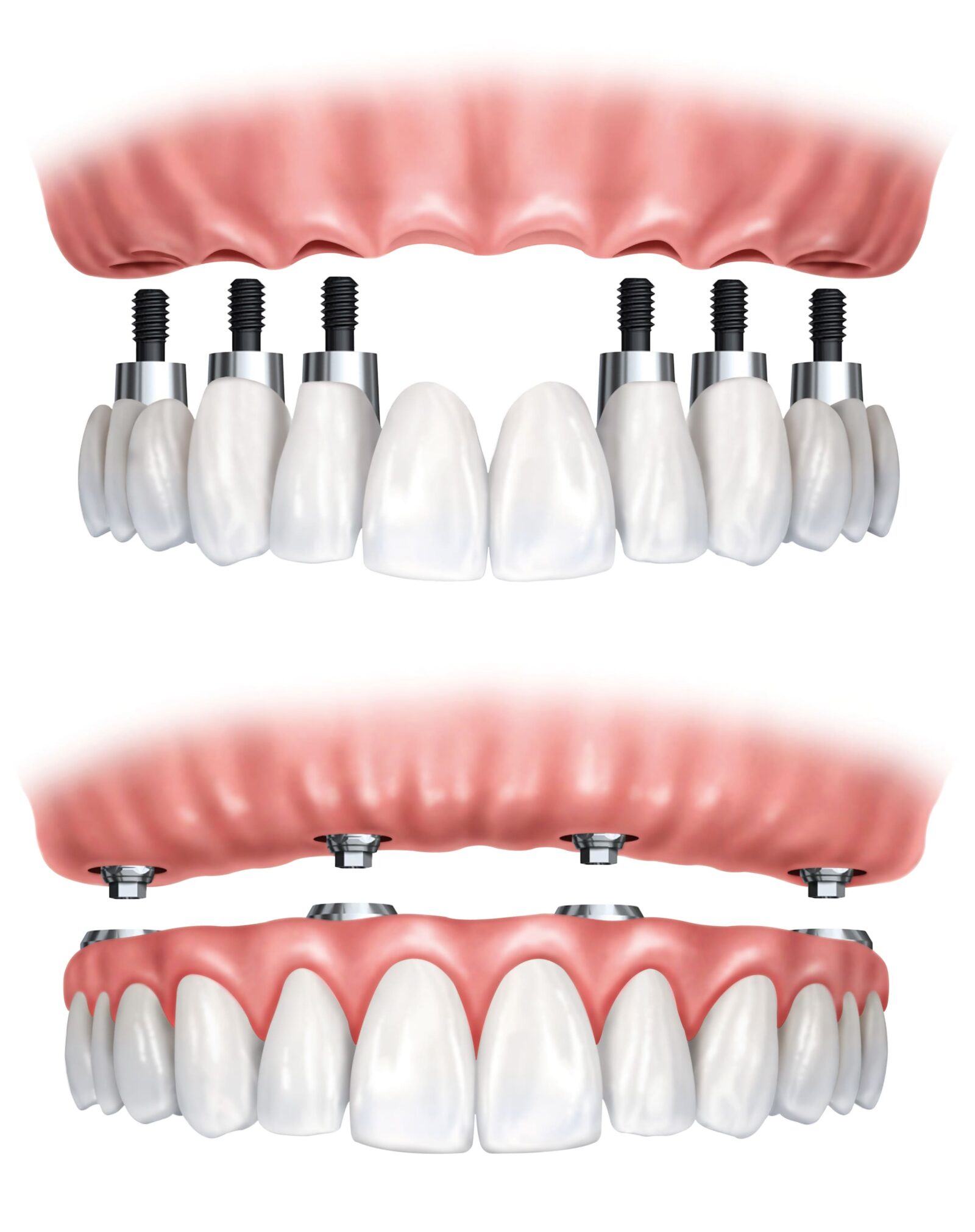When it comes to dental implants, there are a few different options. For replacing an entire mouthful of teeth, there are two primary options that are usually recommended: traditional implants and all-on-four implants. Both have their own unique benefits, but which one is right for you? In this blog post, we will define each type of implant and discuss the similarities and differences between them. We will also help you decide which implant is best for you!
Traditional Implants
Traditional implants are the more common type of implant. They are placed in the jawbone, and then a metal post is attached to the implant. This metal post holds the artificial tooth (or teeth) in place. Traditional implants are very strong and durable, and they can last for many years with proper care.
However, traditional implants require a longer healing time. The implant must be placed in the jawbone and allowed to heal before the metal post can be attached. This can take several months. When it comes to replacing a full arch of missing teeth, you can also expect to have six or more implants placed in each arch. For an entire mouth, you would need a minimum of 12 implants.
All-on-Four Implants
All-on-four implants are a newer approach to dental implants. They are also placed in the jawbone, but they are placed in such a way that maximizes their effectiveness while using less implants. Like their name suggests, this means that only four implants per arch are used. For an entire mouth, this means only 8 implants are needed.
All-on-four implants have a shorter healing time than traditional implants. This is because the metal posts can be attached to the implants as soon as they are placed in the jawbone. In some cases, you may even be able to leave the dentist office with your new teeth on the same day!
What are the differences between traditional implants and all-on-four implants?
Now that we have defined each type of implant and discussed their similarities, let’s talk about the differences. Here are some of the main differences between these two dental implant options:
Number of Screws Used
As we mentioned, all-on-four implants use fewer screws than traditional implants. This is because they are placed in strategic positions within the jawbone to maximize their effectiveness. All-on-four implants use four implants per arch, whereas traditional implants use a minimum of six.

Technique
Both traditional and all-on-four implants are surgically placed in the jawbone. However, all-on-four implants are angled slightly towards the back of the mouth. This angle, combined with their location in the mouth, distributes the weight evenly amongst the four screws to allow for strength and durability.
Bone Augmentation
Bone augmentation procedures are used to increase the size and density of the jawbone. This is often necessary when placing traditional implants, as the implant must be placed in a healthy, strong jawbone in order to be effective. If the jawbone is not strong enough, the implant may not be able to stay in place and could eventually fail.
With all-on-four implants, bone augmentation is not always necessary. This is because of their angled placement within the jawbone. The angle allows the all-on-four implants to grip the jawbone more securely, even if it is not as strong or dense as it should be. With traditional implants, bone augmentation procedures may be required if the jawbone is weak.
Healing Time
All-on-four implants also have a shorter healing time. This is because the screws can all be placed at one time, along with the restoration. The lack of bone augmentation procedures also drastically decreases the time it takes to recover.
Cost
The cost of all-on-four implants is usually lower than traditional implants because fewer screws are used. Additionally, there is no extra cost for supplemental procedures, like bone grafts. However, the cost of your treatment can vary depending on a number of factors and should always be discussed with your dentist.
Which is Best?
Now that we have discussed the similarities and differences between traditional implants and all-on-four implants, which is the best option for you? The answer to this question depends on a number of factors. Your dentist will be able to evaluate your mouth and determine which type of implant is best for you. They will also be able to give you a more accurate estimate of the cost of your treatment. If you are considering dental implants, be sure to schedule a consultation with your dentist to discuss all of your options.
We hope this blog has helped you better understand the difference between traditional implants and all-on-four implants. If you have any questions or would like to learn more, please contact our office. We would be happy to answer any questions you may have!
